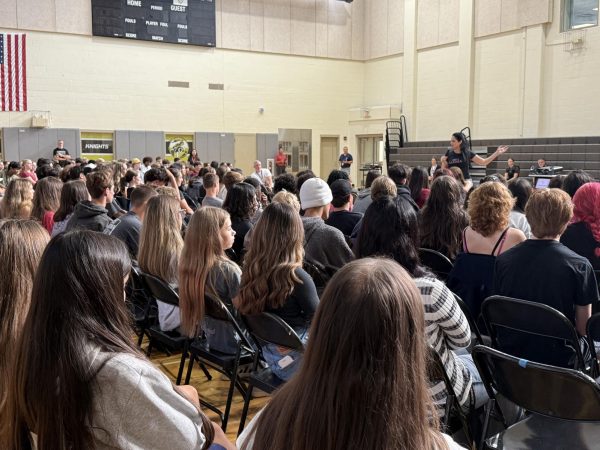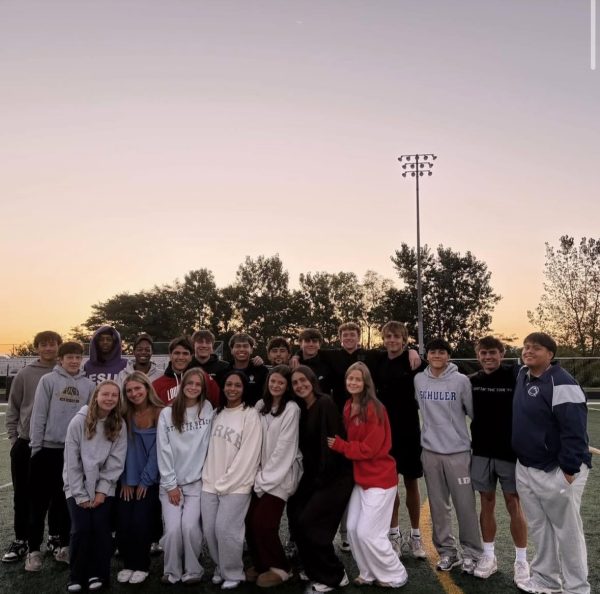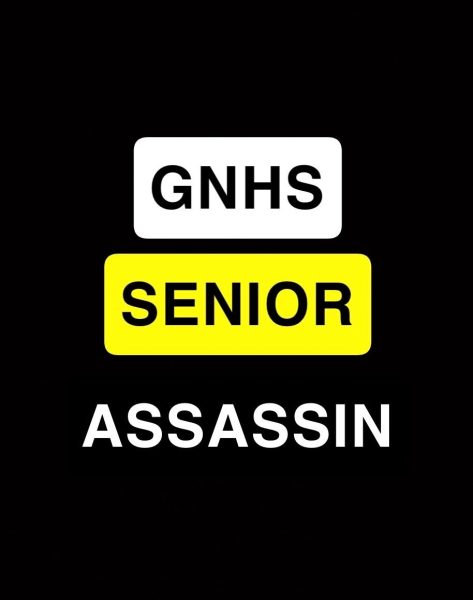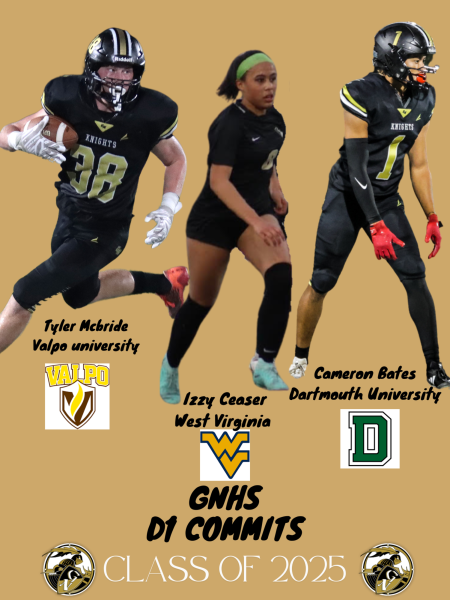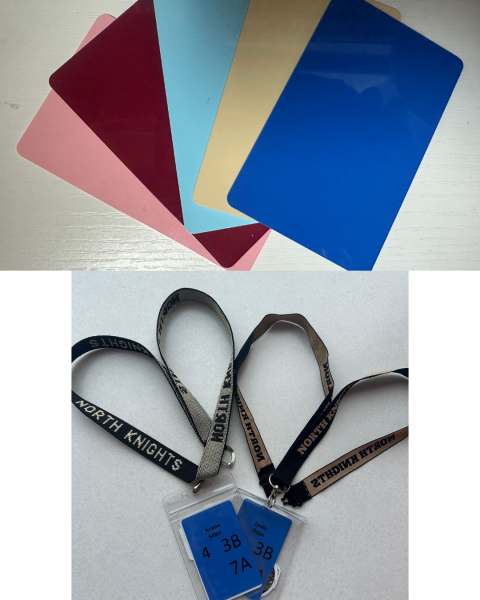Students compete in advancement of History Fair
Students who advanced from the school fair, which took place in January, competed in Niles on February 29. Illinois has one more round before state winners advance to the national competition at the University of Maryland.
Students’ projects must connect to the theme Breaking Barriers in History that happened at least 20 years ago.
“We were in Kent’s class and we had a Socratic seminar, and we were talking about the North and South in general in the Civil War. And so Kaylee was asking (Mr.) Kent why the infrastructure in the North didn’t extend into the South, especially during reconstruction. And so Kent was like that’s a good history fair topic, but he didn’t answer the question. So then Kaylee and I obviously did that as our history fair topic because we were interested,” said junior Jacqueline Weekly.
Juniors Kaylee McCaslen and Jacqueline Weekly chose the North and South barrier during the Civil War.
“We were researching the infostructerial barrier, and we realized that the divide went way deeper into the North and South’s culture, economy and politics, and that’s how we got the topic. We did the whole barrier,” Weekly said.
Students spent seven weeks to complete their project from when it was first assigned to the first subsection of the competition.
“This project required mainly research as the type of work that we put into it. Once we did all the research, we went and printed out all of the different quotes and images we were using as part of our final project. It took a lot of refining and touching up different key points here and there throughout the project,” McCaslen said.
Only the highest scoring projects are allowed to advance because there is a set number of slots.
“It is difficult because you do not want to be biased against other students’ projects in favor of your own. While teachers are not allowed to judge their own students’ projects, it is hard when judging at the Regional competition to not think about the quality work that our students do on the History Fair project,” said history teacher and History Fair judge Tim Sermack.
Multiple judges score each student’s project, usually a history teacher and a volunteer community member.
“At each round of the project, they get feedback from the judges that they then use to improve their projects. Typical improvements include increasing the amount of primary source evidence and improving the quality of their project’s presentation,” Sermack said.
McCaslen and Weekly did not advance past round two because their presentation did not compare with the projects around them.
“I did not think we did that great, but I was hoping that our good research would carry us through to the next round since we only got points off on our presentation in the first round. To any future juniors who will do this project, the presentation does matter,” McCaslen said.

